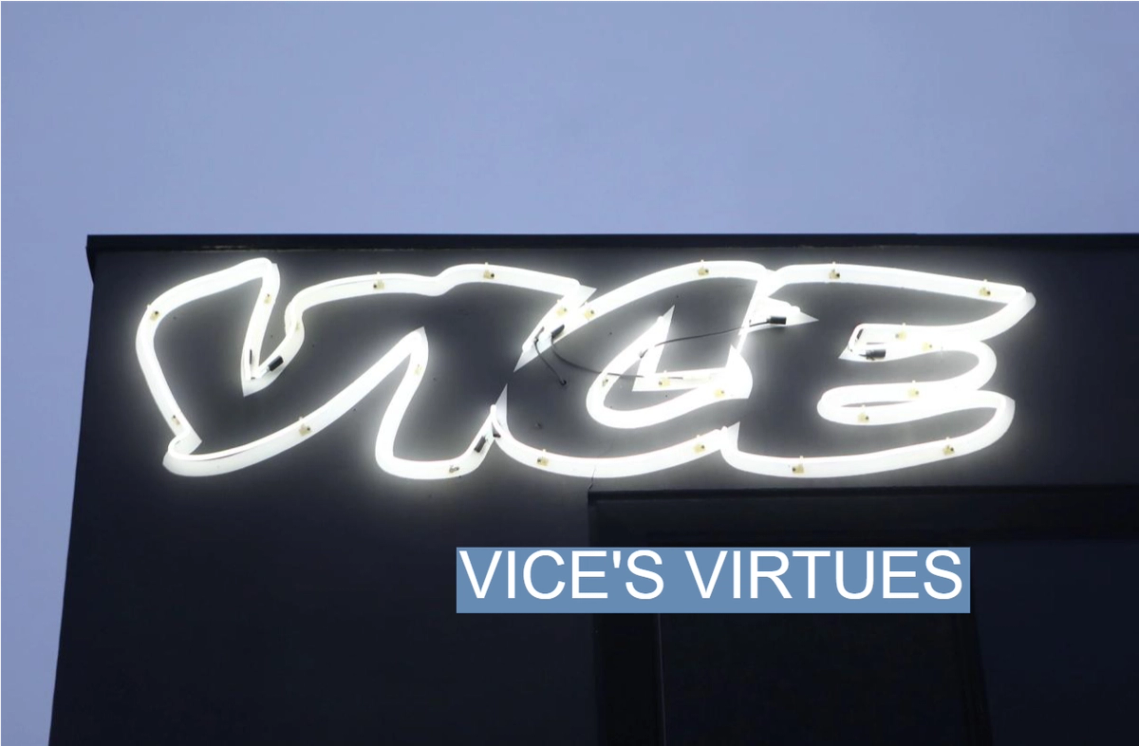 ⁛ News Getty Images/Mario Tama Getty Images/Mario TamaVice’s virtues: Earlier this week, Semafor was first to report that Subrata De, Vice’s executive vice president of news and global head of programming and development, was leaving the company after six years of running its news division. In an interview and subsequent email, the Vice news chief reflected on what she described as an evolution from “bro-ey gonzo reporting” to a stretch that saw Vice win multiple Edward R. Murrow Awards, two duPont-Columbia Silver Batons, a George Polk Award, three Peabodys, 30 News and Documentary Emmys, and one shared Pulitzer for audio work, among other accolades. Still, she said it was “surreal to be in a room with people who are telling you that the business that was the most funded and at the core of the brand is not working and can’t continue.” “From the get go, in any boardroom, or with any board members, or with anybody who would listen, I have continued to make the case around the need for investment in news, and how it can succeed as a business, and how it’s an underpinning of democracy. We have new owners. I made that case to them. It’s not as if they weren’t receptive to that and didn’t acknowledge the success of Vice News. But in whatever this business is going to be moving forward, there isn’t room for a news business.” WSJ bleeds talent: The Wall Street Journal laid off a list of well-regarded Washington reporters in early February, then rushed to assure three of them — Pulitzer winner Brody Mullins, Ted Mann of Bridgegate fame, and the political money sleuth Julie Bykowicz — that they would be able to apply for new jobs. It appeared to be an attempt to get around union rules requiring layoffs be structured by seniority, but it backfired badly: Morale at the Journal appears to be back in the toilet. Adding insult to injury, all the reporters the Journal sought to retain will instead take their union-mandated severance. Meanwhile, The New York Times has poached a star reporter in San Francisco, Kirsten Grind, who broke a series of stories on Elon Musk’s drug use. “I was not expecting to leave the Wall Street Journal after 20 years as an investigative reporter, but I have seen that this is an amazing opportunity for a new chapter,” said Mullins, who’s presently focused on his and his brother Luke Mullins’ new book, “The Wolves of K Street.” Bad education: Forget the 1619 Project’s educational aspirations. Tucker Carlson’s interview with Vladimir Putin has made it into Russian schools in record time, for use in lessons on “history and social sciences to the development of critical thinking skills and media literacy.” AMLO escalates: The New York Times calls the Mexican president’s public attack on the paper’s correspondent, over coverage of Andrés Manuel López Obrador’s alleged ties to cartels in his first campaign, “troubling and unacceptable.” ✰ HollywoodHollywood reporters: Richard Rushfield of The Ankler has constructed a taxonomy of the journalists you’ll meet in Hollywood. Tag yourself: Ben is (or aspires to be) a “visiting dignitary.” ⁜ Tech Getty Images/Mark Felix Getty Images/Mark FelixSovereign rule: A new startup wants to use blockchain technology to provide media organizations with a new tool to combat disinformation. This week, Now Media is launching Sovereignty, a technology platform to provide digital media organizations with verification tools that would help them authenticate their digital content with blockchain tech. In a conversation with Semafor, founders Matt Medved and Alejandro Navia said Sovereignty will leverage Coinbase’s Ethereum Layer 2 technology to authenticate content on the blockchain. They say this would allow users to see a clear and unalterable record of a piece of content’s creation and any edits made to it. “In the age of AI and disinformation, it’s become harder and harder to know who wrote and created what,” Medved said of the product on a Zoom call. The duo said they have had productive conversations with publishers explaining how the technology works. Now Media hopes publishers will allow Sovereignty to be integrated into their content management systems, creating a unique signature every time a piece of content is published. This could help audience members understand the original source material, and decide for themselves whether the publisher is trustworthy and reliable. Now Media’s founders said it was important to launch this year with the U.S. presidential election on the horizon, noting that advances in artificial intelligence will allow for the proliferation of increasingly realistic-seeming fake media. “AI will never get less sophisticated than right now,” Navia said. “That has its benefits, but it’s an increasingly dangerous tool in the hands of bad actors.” Making platforms pay: Indonesia has joined Canada and Australia in pressing Meta and Google to pay publishers for content: “The spirit of the regulation is ... to ensure a fair cooperation between media and digital platforms,” said Indonesian President Joko Widodo. ⁋ PublishingMotherless: Did Vice’s iconic tech blog Motherboard avoid an even bleaker outcome? We’re told there were very preliminary talks last year about a potential sale to…The Messenger. Another person familiar with the now-shuttered company’s plans told Semafor that founder Jimmy Finkelstein was interested in acquisitions, but was more focused on politics, and had taken closer looks at RealClearPolitics and the newsletter site 1440. Now, a possible bidder for Motherboard is the Black-focused media collective Group Black, whose spokesperson declined to comment. Bild-ing: Axel Springer’s German tabloid Bild has hit 700,000 digital subscribers, a remarkable figure and yet another example of how western European media have evaded some of the carnage you see in the U.S. (If you’ve got a good theory as to why, let us know!) | 









